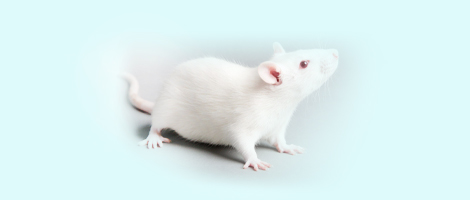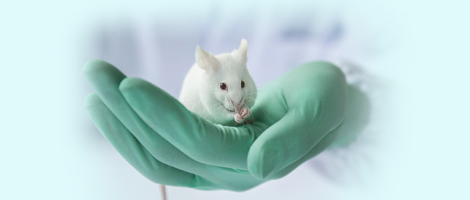[1] LONARDO A, BYRNE C D, CALDWELL S H, et al.Global epidemiology of nonalcoholic fatty liver disease: Meta-analytic assessment of prevalence, incidence, and outcomes[J]. Hepatology, 2016, 64(4):1388-1389. DOI:10.1002/hep.28584.
[2] FAN J G, KIM S U, WONG V W.New trends on obesity and NAFLD in Asia[J]. J Hepatol, 2017, 67(4):862-873. DOI:10.1016/j.jhep.2017.06.003.
[3] ZHAO L P.The gut microbiota and obesity: from correlation to causality[J]. Nat Rev Microbiol, 2013, 11(9):639-647. DOI:10.1038/nrmicro3089.
[4] BOULANG CL, NEVES A L, CHILLOUX J, et al.Impact of the gut microbiota on inflammation, obesity, and metabolic disease[J]. Genome Med, 2016, 8(1):42. DOI:10.1186/s13073-016-0303-2.
[5] 季尚玮, 王颂, 王江滨, 等. 我国不同品系实验室小鼠肝螺杆菌感染状况调查[J]. 中华消化杂志, 2010, 30(9):597-601. DOI:10.3760/cma.j.issn.0254-1432.2010.09.006.
[6] MURAKAMI K, TAKAHASHI R, ONO M, et al.Serodiagnosis of Helicobacter hepaticus infection in patients with liver and gastrointestinal diseases: western blot analysis and ELISA using a highly specific monoclonal antibody for H. hepaticus antigen[J]. J Gastroenterol, 2011, 46(9):1120-1126. DOI:10.1007/s00535-011-0414-x.
[7] KLEINER D E, BRUNT E M, VAN NATTA M, et al.Design and validation of a histological scoring system for nonalcoholic fatty liver disease[J]. Hepatology, 2005, 41(6):1313-1321. DOI:10.1002/hep.20701.
[8] FAN J G.Epidemiology of alcoholic and nonalcoholic fatty liver disease in China[J]. J Gastroenterol Hepatol, 2013, 28(Suppl 1):11-17. DOI:10.1111/jgh.12036.
[9] WANG F S, FAN J G, ZHANG Z, et al.The global burden of liver disease: the major impact of China[J]. Hepatology, 2014, 60(6):2099-2108. DOI:10.1002/hep.27406.
[10] FAN J G, ZHU J, LI X J, et al.Prevalence of and risk factors for fatty liver in a general population of Shanghai, China[J]. J Hepatol, 2005, 43(3):508-514. DOI:10.1016/j.jhep.2005.02.042.
[11] 中华医学会肝病学分会脂肪肝和酒精性肝病学组, 中国医师协会脂肪性肝病专家委员会. 非酒精性脂肪性肝病防治指南(2018更新版)[J]. 传染病信息, 2018, 31(5):393-402,420. DOI:10.3969/j.issn.1007-8134.2018.05.002.
[12] SOOKOIAN S, PIROLA C J.Nonalcoholic fatty liver disease and metabolic syndrome: Shared genetic basis of pathogenesis[J]. Hepatology, 2016, 64(5):1417-1420. DOI:10.1002/hep.28746.
[13] KOLODZIEJCZYK A A, ZHENG D P, SHIBOLET O, et al.The role of the microbiome in NAFLD and NASH[J]. EMBO Mol Med, 2019, 11(2):e9302. DOI:10.15252/emmm.201809302.
[14] BRANDL K, SCHNABL B.Intestinal microbiota and nonalcoholic steatohepatitis[J]. Curr Opin Gastroenterol, 2017,33(3):128-133.DOI:10.1097/mog.0000000000000349.
[15] SAFARI Z, G RARD P. The links between the gut microbiome and non-alcoholic fatty liver disease (NAFLD)[J]. Cell Mol Life Sci, 2019, 76(8):1541-1558. DOI:10.1007/s00018-019-03011-w.
[16] WAHLSTRÖM A, SAYIN S I, MARSCHALL H U, et al. Intestinal crosstalk between bile acids and microbiota and its impact on host metabolism[J]. Cell Metab, 2016, 24(1):41-50. DOI:10.1016/j.cmet.2016.05.005.
[17] HE X Y, JI G, JIA W, et al.Gut microbiota and nonalcoholic fatty liver disease: Insights on mechanism and application of metabolomics[J]. Int J Mol Sci, 2016, 17(3):300. DOI:10.3390/ijms17030300.
[18] FOX J G, LI X, YAN L, et al.Chronic proliferative hepatitis in A/JCr mice associated with persistent Helicobacter hepaticus infection: A model of Helicobacter-induced carcinogenesis[J]. Infect Immun, 1996, 64(5):1548-1558. DOI:10.1128/iai.64.5.1548-1558.1996.
[19] 曹舒扬. 肝螺杆菌感染致BALB/c小鼠肝纤维化及其致病机制的初步探究[D]. 扬州: 扬州大学, 2019.
[20] YU H, LEE H, HERRMANN A, et al.Revisiting STAT3 signalling in cancer: new and unexpected biological functions[J]. Nat Rev Cancer, 2014, 14(11):736-746. DOI:10.1038/nrc3818.
[21] GALLI A, SVEGLIATI-BARONI G, CENI E, et al.Oxidative stress stimulates proliferation and invasiveness of hepatic stellate cells via a MMP2-mediated mechanism[J]. Hepatology, 2005, 41(5):1074-1084. DOI:10.1002/hep.20683. |






